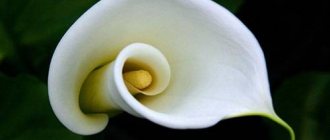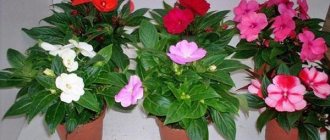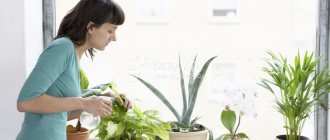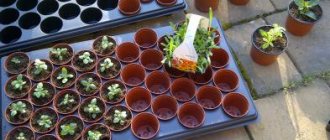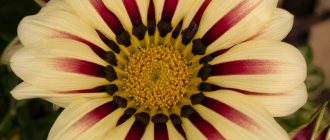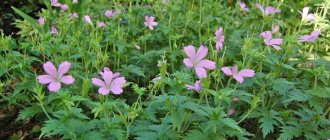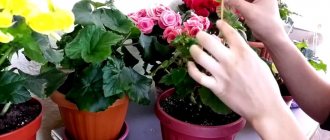Geranium, or pelargonium, is not only an indoor, but also a garden flower, forming an endless number of inflorescences in the summer and finishing blooming only when cold weather sets in. But most often, gardeners grow it as an annual, allowing the cold to destroy entire bushes with lush flowers. But pelargoniums can be grown as perennial plants, despite the fact that they do not overwinter in open ground, even with the construction of a reliable shelter.
Some gardeners practice storing geraniums at home in winter. Thanks to simple manipulations performed with garden flowers, you can provide yourself with planting material for the next year. Therefore, there is no need to purchase seeds and grow seedlings. And this saves money and time. Let's find out how to properly preserve pelargonium in an apartment in order to plant it in the garden next spring.
Periods of growth and dormancy of pelargonium
Pelargonium has pronounced periods of growth and dormancy. They especially stand out when grown as a houseplant. In summer, geranium blooms profusely, forming spherical lush inflorescences of predominantly red shades (the color of the flowers depends on the variety). Then, when cold weather sets in (in September), and the length of daylight hours begins to decrease significantly, flowering stops. At this time, geranium enters a period of rest, during which the metabolism slows down and energy is consumed economically. At the same time, it requires almost no nutrients and moisture.
In the spring, when the first rays of the sun begin to shine (in March), the flower wakes up. His metabolism accelerates and he begins to consume large amounts of minerals and water. All this leads to rapid flower growth and the formation of many long peduncles with gradually swelling buds. Pelargonium begins to bloom at home with proper care in April or May.
What is the difficulty of keeping it in winter?
The difficulty of maintaining a plant during the winter season lies in the following factors:
- insufficient lighting due to reduced daylight hours;
- entering a state of rest;
- the need to reduce the rate of watering and fertilizing.
Due to the combination of the above nuances, care for geraniums in the cold season must be changed.
Did you know? There are more than 400 species of geraniums, some of which grow in the tropics.
When to move geraniums from the garden indoors
The dormant period for geraniums begins in September. Therefore, it is at this time that you should move it home from the garden, even though it still has many flower stalks with lush and fresh inflorescences left. Do not spare them, because if you leave the plant in open ground, you risk exposing it to frost. Then one morning you will realize that there is nothing left to save for next year.
The beginning or middle of September is the best time for pelargonium to complete the period of active growth and flowering in central Russia and the Moscow region. At this time, the duration of daylight hours decreases to 8-9 hours, which is very little for a plant that loves bright sun.
In the Urals and Siberia, geraniums should be removed in August, since the first frosts often occur in the summer. But in the south of the country this can be postponed until October or even early November, provided that the temperature outside at night does not drop below +10 °C.
Preparing for winter: pruning
Preparation for the dormant period begins in the fall, and the most important thing to do is to prune the geranium.
This will subsequently have a huge impact on how it will bloom. Without pruning, even if all the necessary conditions outlined below are met, such lush and beautiful flowers will not appear on the plant. Procedure for pruning geraniums:
- At the end of September, absolutely all flower stalks are cut off, regardless of whether they have faded or are still actively doing so. This is done to help geraniums preserve their reserves of resources for the winter.
- All leaves that have already turned yellow and withered or have just begun to do so are plucked off or cut off. Experienced gardeners recommend pinching them off rather than cutting them with scissors. In the second case, mere protruding roots remain.
- For dense flowering in September, geranium is pruned so that the beginning of the branches remains, or just above (3–5 cm) the node. The upper cut part can be rooted as a cutting.
Methods for storing pelargoniums (geraniums) in winter
There are three methods for storing pelargonium in winter at home:
- in the apartment;
- in the basement in a pot;
- in the basement without a potty.
The first method is the easiest:
- Dig up the garden geranium and prepare a suitable size pot for it.
- Fill it with either universal soil or soil taken from the place where you dug up the flower. Don't forget about drainage at the bottom.
- Plant pelargonium and take it to your apartment.
- Place it in a bright window or other well-lit but cool place. Make sure that the leaves of the plant do not touch the window glass.
- If the sun hardly shines into your apartment, provide the plant with artificial lighting. You need to shine on it for 10-12 hours a day.
- Provide air temperature in the range of +10…+15 °C. The minimum permissible temperature for this content is +4 °C.
- Geranium does not particularly respond to air humidification, so dry winter apartment air will not harm it. However, dry air (less than 30-40%) should be avoided, otherwise the leaves will begin to dry out.
- Water the flower regularly. In winter, watering frequency is approximately once a week.
When storing pelargonium in the basement, it is important to comply with the following conditions:
- maintaining the temperature at +2…+7 oC.
- the air humidity level should not fall below 80%;
- the basement should be dark;
- the room must be ventilated.
If all basements are dark and cool, then humidity and air ventilation can sometimes be a problem. To maintain it at the required level, place a basin of water in the room. It will gradually evaporate, and the amount of water evaporated will be enough to humidify. And if ventilation is not provided in the basement, then ventilate it regularly to prevent air stagnation and fungal damage to stored plants.
To store geraniums in a pot in the basement, you need to, as per the above instructions, dig up the flower and plant it in the pot. But then you need to put it not in the room, but in the basement. At the same time, it will hardly need watering. Only occasionally should you check the plant and water it sparingly only in cases when the soil is completely dry.
Instructions for preserving garden geraniums in the basement without pots in winter:
- Dig up the pelargonium and trim it. It is necessary to remove all flower stalks, even if they continue to bloom vigorously.
- Shake the roots so that the soil falls off them.
- In the basement, stretch a string and hang the geranium bushes at intervals so that there is air space between them.
- Another option is to use either paper bags or newspaper to house and wrap the plants.
With this storage method, plant roots do not receive moisture at all. Therefore, the green part of the plant may begin to fade. Dry air in the basement will contribute to this, so be sure to keep the humidity at 80-90%.
Remember to visit the basement at least once a month to check the condition of the geraniums. If they are wilting, give them a bath. For this:
- Prepare a container with cool water.
- Remove all hanging bushes. Or open paper bags and newspapers to remove stored flowers.
- Dip the geraniums in water, roots down, and soak for 1-2 hours.
- Remove the bushes and place them on paper towels to dry thoroughly. This may take a whole day.
- Again, hang the geranium bushes on strings or package them in paper bags.
In total, during the cold season you will have to perform about 5 such procedures. Thanks to them, the plants will not wither and will winter favorably until spring. Then they can be taken out to stimulate their growth and the beginning of flowering.
How to preserve a plant at home and can it be stored in the basement?
Already in the fall, the pot with the plant is placed in a cool and dimly lit place. A southern or northern window sill in a house/apartment is quite suitable for this, since there is diffused sunlight there.
And to make up for the lack of light at this time, you can use fluorescent lamps. The optimal daylight hours are 12 hours. Such lamps are an excellent solution if it is not possible to place geraniums on the windowsill: you can independently build racks with lamps, thanks to which they can be placed anywhere in the house/apartment. Also, additional lighting guarantees the uniform development of all shoots (when there is insufficient lighting, they begin to stretch).
The frequency of watering and the amount of water for this are gradually reduced, because the plant stores water in its thick stems for the winter. You need to water so that the soil is very slightly moist, and the next watering should be done when the substrate is completely dry.
highly not recommended to fertilize geraniums until the very beginning of March. If the plant suddenly begins to wither, you can add fertilizer, but not more than once every month and a half.
It is better to reduce the temperature to 10 - 12 degrees, so for the winter it is convenient to place the flower on the balcony or in the basement. This temperature regime is observed until the beginning of spring.
Despite the fact that in the cold season geranium should be in a room where the temperature is extremely low, it does not tolerate cold drafts. Therefore, during any ventilation, the plant should be removed as far as possible from the open window.
How to welcome spring
Preparing for the period of active growth differs depending on how you stored the geranium at home. If it is in a bright, cool room, then the pot with the plant should be taken out onto the balcony from the moment when the outside temperature during the day stays stable at +2 °C. But the first time stay should not exceed 30 minutes. Each time, increase it by a few minutes so that by the time the threat of frost returns passes, the pelargonium is already hardened for being outside around the clock. Then it can be transplanted into a flower garden. In Siberia and the Urals it is June, in the middle zone it is the end of May or the beginning of June, and in the south it is the beginning of May.
Instructions for activating the period of active growth in geraniums stored in the basement in winter without planting in a pot:
- With the onset of March, inspect the bushes and remove dried branches and leaves, if any.
- Prune, leaving the stems about 10 cm high from the “trunk”.
- Soak the roots of the plant in water for 5-6 hours. First add complex fertilizer for indoor plants to the water, but you need to take half the dosage recommended in the instructions.
- Prepare a pot that is several centimeters wider than the diameter of the root system. It should have drainage holes. Fill the bottom with drainage and universal soil.
- Plant the geranium in the pot and moisten the soil generously.
- Care for it as you would a houseplant. Do not forget about watering, fertilizing and loosening the soil.
- Keep the plant in a well-lit and warm place to allow it to begin to grow.
- 2-3 weeks before planting in open ground, begin hardening off pelargonium to prepare it for outdoor conditions. To do this, take it out to the balcony every day. First for half an hour, then more and more.
- When the frosts have subsided, transplant the flower into the garden.
If you stored geraniums in pots in the basement, then with the onset of March, move them into the apartment and place it in a well-lit place. Then follow steps 6-9 according to the instructions above.
Advice! To make pelargonium come to life faster and adapt to new conditions, when soaking it in a fertilizer solution, also add the growth stimulator Zircon. Just 2-3 drops of the drug per 1 liter of water is enough.
Growing geranium seedlings is a long and troublesome task. And young plants often do not have time to grow large enough to delight you with abundant flowering during the summer. But by preserving pelargonium in the winter year after year at home, you can allow it to gain strength. And from this you will get more inflorescences from one bush in one summer.
Preparing geraniums
Only strong and strong plants should be left for wintering, and weak ones, with signs of disease or the presence of insects, should be discarded.
A mandatory procedure before digging up geraniums for the winter is pruning. In September, you should pinch off (not cut) dry leaves that are beginning to dry out, and at the end of the month, remove all flower stalks - faded and not yet blooming. Removing flower stalks helps preserve the plant's vital resources for the winter.
After 2-3 weeks, when the dug plant adapts to the wintering site, cut all shoots to 1/2 or 1/3 of the length (3-5 cm above the node).
Reproduction and transplantation
To propagate the ball, 2 methods are used: cuttings and sowing seeds. The first method has one drawback - it is important to select suitable seed material. Cuttings affected by pests or diseases will not be able to take root. With the seed method, the difficulty lies in caring for the planting. It is important not to overwater young plants and to ventilate the organized greenhouse in a timely manner.
Seeds: how to care
Kalachik reproduces well with the help of seeds; you can collect them yourself from a flowering bush or purchase them in a store. Store-bought seeds need to be checked by expiration date; if they are collected recently, germination rate will be high.
The seeds are planted in loose soil, slightly moistened and previously disinfected with a solution of potassium manganese, and planted to a depth of 2 cm. The pot with fresh seeds is covered with glass or plastic film and kept at a temperature of 18-22 degrees. The glass is removed after germination. The sprout is pinched after the formation of 5 leaves. Spray with a spray bottle, being careful not to touch the seedlings.
Interesting to know!
A plant grown from seeds can bloom in 6 months, so it is better to sow it in February.
They are transplanted into a separate pot after the formation of large bushes with 2-4 pairs of true leaves.
Growing by cuttings
Growing a full-fledged plant from a cutting is quite simple. To do this, use the remains after autumn or spring pruning. It is better to choose cuttings with a lignified trunk. There are several popular rooting methods:
- Water. Add an activated carbon tablet to a small container of water and place the cutting in it. Place the glass on a well-lit windowsill and wait for the roots. The process of their appearance in the spring takes about a week, and in the fall more than a month. The main risk when using this method is rot.
- Perlite or vermiculite. The cuttings are rooted in moistened perlite or vermiculite, placing the sprout at a slight angle - this way the young plant will spend less energy on its own support. The plant is placed in a consecrated place or under a phytolamp.
- Peat. It is convenient to use a peat tablet. It needs to be soaked in water before use. After opening it to the volume of the glass, a stalk with an oblique cut is placed in the center. The advantage of this method is the ability to subsequently transship instead of transplanting. This method has the advantage that the peat in tablets is disinfected, therefore the risk of death of the cutting is minimal.
- Priming. The plant takes root in the soil, as in a peat tablet, only the substrate must first be prepared. It is coughed out in the oven or doused with manganese to disinfect it.
The cuttings are transplanted into a permanent pot after noticeable growth and the formation of new leaves. It is better to wait until the roots have entwined the entire existing earthen ball.
Landing
The plant must be replanted carefully due to the fact that its root system is delicate. The new flowerpot should be two centimeters larger in diameter than the previous one. It is not worth using a large pot, because the plant will not bloom. It is recommended to plant geraniums rooted from cuttings or a bush after wintering in April - during the period of growth and development.
Transfer
Before replanting, the ball needs to be watered with water. So, it will be easier to remove the earth ball from the flowerpot. Transplantation is carried out in spring or autumn, after flowering has ended. After transplanting into new soil, the plant is not fed with fertilizers for 4 months. The substrate contains all the nutrients necessary for growth and development.
Wintering pelargonium on the balcony
Wintering for pelargoniums
Post by Natalia Alekseevna » Mon Jan 30, 2012 1:31 pm
Re: Wintering for pelargoniums
Post by Jkmuf » Tue Apr 17, 2012 12:10 pm
Re: Wintering for pelargoniums
Post by El'f » Fri Nov 23, 2012 2:22 am
Re: Wintering for pelargoniums
Posted by jenny » Fri Nov 23, 2012 7:04 am
Re: Wintering for pelargoniums
Post by [email protected] » Fri Nov 23, 2012 1:01 pm
Re: Wintering for pelargoniums
Post by Vine » Wed Nov 28, 2012 10:16 pm
Re: Wintering for pelargoniums
Post by [email protected] » Wed Nov 28, 2012 11:58 pm
Re: Wintering for pelargoniums
Posted by jenny » Thu Nov 29, 2012 7:56 am
Re: Wintering for pelargoniums
Post by Vine » Thu Nov 29, 2012 11:50 pm
Medicinal properties and benefits of the flower
The leaves of zonal pelargonium release essential oils into the air and destroy viruses and bacteria floating in the room. The plant is recommended to be kept in the children's room because it calms and improves sleep. The leaves of the plant are used for otitis, rhinitis and rheumatism. An infusion is made from them to treat diseases of the gums and throat.
According to popular belief, the flowering of red geranium in an apartment indicates love and mutual understanding in the family. The plant normalizes the aura and makes the psycho-emotional environment more comfortable for life.
Why do you need to prune pelargonium?
The pruning procedure serves several purposes:
- the main purpose of why you need to prune pelargonium is to help the plant form a lush bush that will be strewn with flowers;
- rejuvenation of the bush, renewal of plant shoots;
- prevention of diseases and pests;
- strengthening the immune system;
- more lush and longer flowering;
- the bush looks well-groomed. In winter, especially if the bush was brought in from the street, due to lack of light the geranium sheds its foliage and looks less attractive.
Photo pixabay/newarta: After the procedure, flowering becomes more magnificent.

